There was a time in my reckless younger days when I thought nothing of mounting up and blasting a couple hundred miles in the darkness of an early spring night, across the Central Valley, up into the foothills of the Gold Country and over the top to Downieville, the Feather River Canyon, or Lake Tahoe for the sheer buzz and bragging rights of the escapade.
Being immortal, the notion of ending up in an early cinerarium as the result of a mash up with a deer never crossed my mind. Call it a charmed existence.
That suicidal insouciance persisted well into my middle years and it wasn’t unusual for me to find myself roaming the ungulate-infested back roads of Wyoming making time for Sturgis on moonless nights that were, to borrow a metaphor from Twain, “As dark as the inside of a cow.”
That all pretty much changed—or at least my cavalier attitude towards the dangers posed by the practice changed—when in the spring of 2006 Lawrence Grodsky was killed by a nighttime collision with a deer. That tragedy was both a devastating loss to our profession as well as the cruelest of ironies.
As many if not most of you may recall, Lawrence was widely regarded as the foremost authority on safe motoring among the two-wheel community. For 18 years he penned the “Stayin’ Safe” column that appeared in our sister publication, Rider magazine.
For all of his vast experience and expertise, however, Lawrence knew there was one peril that he couldn’t anticipate or properly prepare for, and that was the wayward deer materializing on a darkened highway at exactly the wrong moment. That’s what got him, and it’s chilling to know that he somehow knew it, having told his girlfriend, Maryann Puglisi, mere weeks before the collision, “That’s how I’m going to go. It’s going to be a deer.” She later elaborated, saying, “He could deal with the idiot drivers, but at night when a deer jumps into your path, that’s it, and he knew it.”
So he religiously avoided putting himself into that perilous situation, but on that fateful night he had been running late returning from an engagement and did it anyway.
Lawrence was far from alone in his fatal plight, and the statistics concerning deer collisions and rider deaths are harrowing. Nearly three-quarters of all deer-involved fatalities are motorcyclists, and 90 percent of those occur between dusk and dawn, when deer are most active, the shadows are lengthening, objects are growing indistinct and the darkness is descending like a curtain drawn across the landscape.
And those fatalities are on the rise, as is the deer population, which has grown ten-fold since 1920 even as their habitat has continued to shrink.
Until now, the only defensive mechanism marketed to combat the menace has been the ubiquitous Deer Whistle, which relies not on science, but superstition and wishful thinking for its effectiveness, which has never actually been documented any more than Yeti Repellent (don’t see any yetis, do ya?).
That could all be changing in the near future, however, as infrared camera technology continues to evolve apace. At the forefront of the campaign is AutoLiv Night Vision, and it’s not a matter of improving the actual camera that’s at issue, but rather how the captured images are analyzed and interpreted by the device’s electronic control unit and presented to the vehicle operator. The company already has systems offered on certain high-end automobiles—BMW, Mercedes, Audi and Rolls Royce—that have the ability to recognize the presence of pedestrians at a distance four times greater than the range of the vehicle’s headlight beams. That development came in 2008, and now the company has gone the next step and engineered a system that identifies four-legged critters as well—deer in particular, since that species accounts for 80 percent of all wildlife encounters.
The research that’s gone into creating the detector is nothing short of exhausting—even mind-boggling. The AutoLiv technicians spent six years gathering information from road trips, safaris and even deer parks, amassing in the process the foundational data for constructing sophisticated algorithms that identify not just the creature, but what it’s likely to do, and how that behavior is likely to intersect with that of your vehicle, factoring in your own speed, steering angle and yaw to make that assessment. If the system determines that trouble’s brewing it gives the operator both a visual and audible warning. The beauty of that feature is that you’re not obliged to stare at an infrared screen continuously when you should be staring somewhere else, which is the case with less refined infrared viewers.
While currently only being offered on the 2014 Mercedes S-Class, the animal detector will be offered in a number of other applications going forward. From what I gathered in speaking to the company’s media rep, a motorcycle prototype is very likely in the offing as well (though we have yet to confirm that tidbit definitively). And why not? The actual IR camera is small enough to fit in your hand (and mount behind just one of the four rings on an Audi’s grille badge) and can interface with an existing navigation system screen, a dedicated separate screen or even appear as a heads-up ghost image on your windshield.
While I’m usually skeptical about more and more whiz-bang electronics coming into touring bike cockpits because most of them like Bluetooth phones, cartoon GPS maps and multi-function sound systems are distractions, this one I like a lot. Unlike all of those others, this one could actually save your—and the deer’s—hide.
Check out what AutoLiv’s up to at www.doyouhavenightvision.com/night-vision-animal-detection/.
It’s all right here in the diaries…


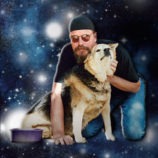

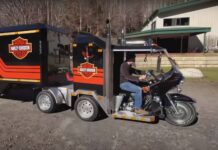
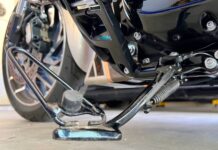
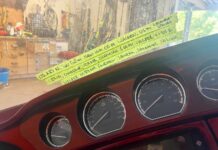
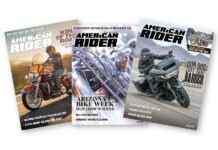
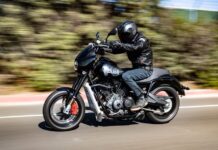










“Might”? be a help. I live in deer country, northwest Pa. I hit one two years ago with my truck. Center punched it at 50 mph. Never saw the deer (5am). Never would have seen it as it was at a dead run from a corn field. Missed one (on the Harley) in broad daylight a decade ago as it jumped in from of me from a 10 ft high embankment to my right. Dumb luck that she just stood still.